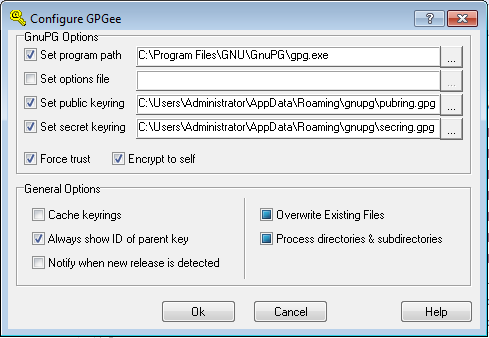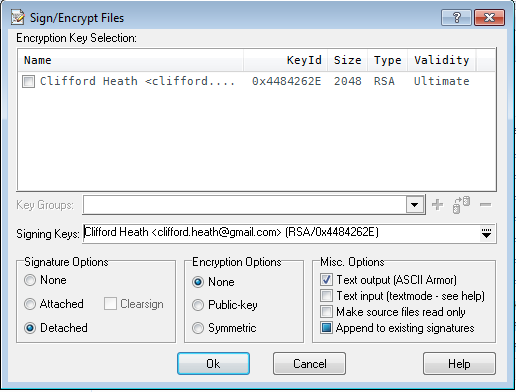Click through the installer screens to the end:

Now, you can right-click on any file or directory in Windows Explorer, and you'll see a new option, GPGee:

You need to tell GPGee where everything is, so select Configure. The next screen shows my configuration (for the Administrator account):

Now, when you right-click a file or directory and select Sign, you'll see a screen like this (after choosing a signing key):

Hitting ok asks for your passphrase:

and now you have a signed copy of the original file.
If you had selected Encrypt as well, you'd have to select the public keys of the people you want to allow to decrypt the file, but otherwise the process is the same. Note that I selected "Text output", which means that the signed&encrypted text is encoded in ASCII so it looks similar to the public key I showed earlier. This file can easily be attached or pasted into any email message.
A similar procedure allows you to decrypt files you receive from others. GPGee will again ask for your passphrase, so it can unlock your private key.
When you receive a PGP encryption key from a friend, you can save this email (as text) to a file whose name ends in .asc, and then you can use GPGee to verify the signature. It looks like this:

That completes the installation procedure. Enjoy!

























































 Reply With Quote
Reply With Quote
Bookmarks